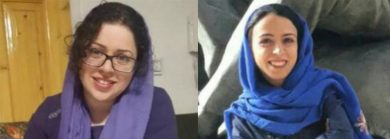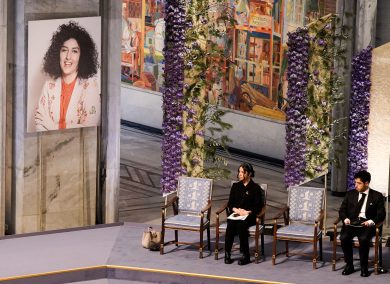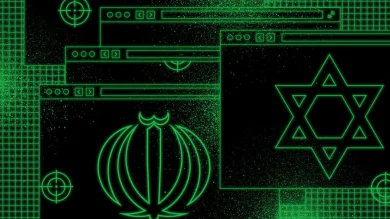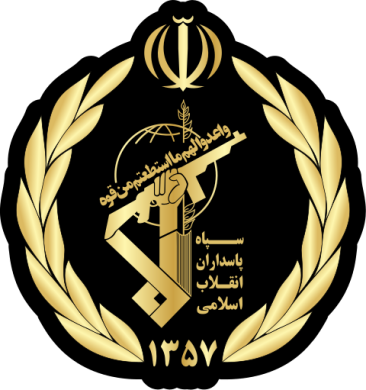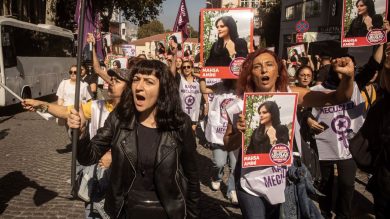In the Islamic Republic of Iran, the Islamic Revolutionary Guard Corps (IRGC) functions not only as a military force but as the primary instrument of ideological enforcement. Among its most targeted groups are female journalists and activists, whose efforts to challenge systemic injustice and report on truth place them in the crosshairs of state repression. This report delves into the mechanisms of surveillance, harassment, arrest, and intimidation that the IRGC employs to silence Iranian women who dare to speak out.
1. Introduction
The Islamic Revolutionary Guard Corps (IRGC) plays a pivotal role in preserving the status quo of the Islamic Republic. Charged with defending the revolution and protecting the regime, the IRGC operates a wide-ranging network of intelligence, cyber, and paramilitary units tasked with quelling dissent. Female journalists and activists—by virtue of their dual challenge to both political and patriarchal systems—have emerged as key targets.
Their voices are seen as subversive not merely because they oppose authoritarianism, but because they redefine womanhood in Iran: empowered, vocal, and unafraid. The regime responds with surveillance, censorship, arbitrary arrests, and psychological warfare.
2. Why Women Are Targeted
A. The Power of Female Dissent
Women in Iran defy not only the regime’s political dominance but also its religious-cultural control. Their activism represents a direct challenge to the theocratic patriarchy, and their presence in the public sphere is revolutionary in itself.
Key reasons women are seen as threats:
• Visibility: Women journalists and activists often lead civil movements or cover sensitive issues.
• Symbolism: Their actions, such as removing the hijab, are acts of political defiance.
• Influence: Many have large followings on social media, amplifying their reach.
• International Solidarity: Their cases garner significant global attention, pressuring the regime.
3. The IRGC’s Tools of Repression
A. Surveillance and Cyber Monitoring
The IRGC uses a sophisticated surveillance apparatus to monitor activists and journalists online and offline:
• Monitoring social media accounts, especially those linked to feminist or reformist movements.
• Using facial recognition and street surveillance to track protesters.
• Infiltrating activist circles and private messaging apps.
• Coordinated cyberattacks to disable or hijack accounts.
B. Arbitrary Arrest and Interrogation
Once flagged, female activists are often arrested without warrant. Common IRGC tactics include:
• Night raids without judicial oversight.
• Detention in solitary confinement.
• Interrogation sessions that involve psychological abuse, threats, and coercion.
• Confiscation of personal devices and digital files.
C. Forced Confessions and State Propaganda
The IRGC’s propaganda arm often broadcasts forced confessions, extracted under duress, where detainees “admit” to crimes such as:
• Collaborating with foreign governments.
• Undermining national security.
• Promoting “Western feminism.”
These confessions are used to discredit the individual, legitimize their imprisonment, and warn others.
4. Inside Iran’s Prisons: The Gendered Experience
A. Evin and Qarchak Prisons
Two of the most notorious detention centers for female activists:
• Evin Prison (Tehran): Political detainees are often held in Ward 2A, run by IRGC Intelligence.
• Qarchak Prison (Varamin): Known for overcrowding, lack of medical care, and exposure to violence from other inmates.
B. Psychological and Physical Abuse
Reports from released prisoners reveal:
• Sexual harassment during interrogation.
• Sleep deprivation, mock executions, and verbal abuse.
• Being denied access to lawyers, medical treatment, and family visits.
5. Case Studies
A. Niloofar Hamedi and Elaheh Mohammadi
These two journalists broke the story of Mahsa Amini’s death, sparking nationwide protests. They were arrested shortly after and held in Evin Prison, accused of collusion with foreign enemies.
B. Narges Mohammadi
A renowned human rights defender, Narges has been imprisoned multiple times for her advocacy. Despite deteriorating health, she continues to publish reports on human rights abuses from inside prison.
C. Sepideh Gholian
A journalist and labor rights activist, Sepideh was arrested for covering labor protests. After enduring torture and being forced into televised confessions, she remains a vocal critic of the regime.
6. Digital Resistance and Global Advocacy
Despite heavy censorship, Iranian women use social media platforms, VPNs, and encrypted apps to:
• Share stories of abuse.
• Organize protests.
• Build global support networks.
Hashtags like #WomenLifeFreedom and #FreeIranianWomen have become rallying cries.
International media, diaspora organizations, and human rights groups play a key role in amplifying these voices.
7. The IRGC’s Disinformation Campaign
To counter global solidarity, the IRGC runs disinformation campaigns aimed at:
• Undermining the credibility of female activists.
• Creating fake feminist personas to confuse and divide online movements.
• Spreading propaganda that portrays Iran as the victim of Western cultural war.
8. International Responses and Recommendations
A. What’s Been Done
• The United States and some European countries have imposed sanctions on IRGC officials.
• The UN and international NGOs have issued statements and reports.
• Some global media outlets have dedicated platforms for Iranian voices.
B. What More is Needed
1. Global Designation of the IRGC as a Terrorist Organization
• To limit its financial, political, and operational reach.
2. Protection for Iranian Journalists in Exile
• Many women face threats abroad from IRGC-linked agents.
3. Support for Digital Access and Security
• Provide VPNs, secure tools, and training for activists.
4. Amplification of Women’s Voices
• Media platforms should prioritize reporting on female-led resistance in Iran.
Conclusion
The Islamic Revolutionary Guard Corps views female journalists and activists not as individuals expressing dissent, but as existential threats to its patriarchal theocracy. Yet, every arrest, every torture session, and every attempt at silencing only amplifies these women’s resolve.
The future of Iran will be shaped by the courage of women who continue to fight, report, organize, and resist—despite knowing the high price. The global community must not only witness their struggle, but actively support it.
Join Our Newsletter!
Stay informed with the latest updates, news, and ways to take action in the fight for justice and global security. Sign up now to get updates delivered straight to your inbox!

